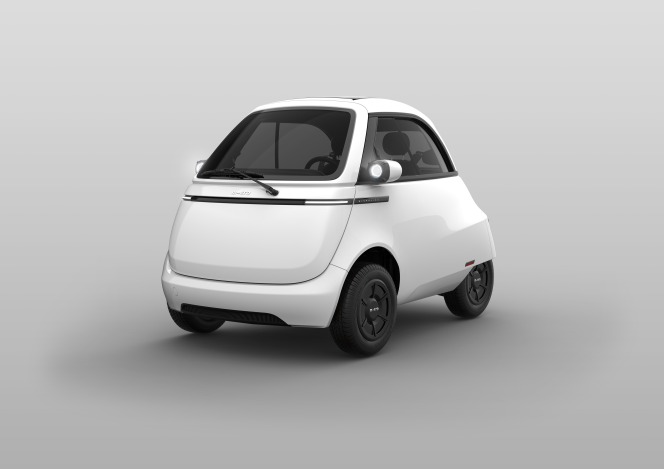The BMW Isetta speaks of a time that those under 60 cannot know. Imagined by an Italian manufacturer of refrigerators before prospering thanks to BMW which made it a popular vehicle (155,000 units produced in the 1950s), the ovoid Isetta is the mother of all urban micro-vehicles.
Micro, a pioneering Swiss manufacturer of the modern scooter, offers a very faithful electric reinterpretation of the one nicknamed “the yogurt pot”, a nickname often (and unduly) attributed to the Fiat 500.
With its slightly shorter axle at the rear than at the front, its single front-opening door which requires special gymnastics to access the bench seat, its headlights integrated into the mirrors like small ears and its rear hatch whose design furiously evoking the aesthetics of the fifties, the Microlino pays homage to its ancestor. By opting for a retro style and a choice of vibrant colors, it does not go unnoticed and stands out from other electric urban two-seaters accessible with or without a license (Citroën AMI, Renault Twizy), which are much less versed in seduction.
Travel short distances
Administratively speaking, the Microlino presents itself as a “heavy quadricycle” that can be driven from the age of 16 with the B1 license, required to pilot a 125 cubic centimeter two-wheeler. Its 12.5 kilowatt engine (around 17 horsepower) propels it up to 90 kilometers per hour but does not give it access to expressways – except in the Paris region, where an exemption has been granted -, which limits de facto its scope of action to urban areas. This egg mounted on wheels, which measures only 2.51 meters and does not exceed 500 kg, moves around at ease thanks to its maneuverability and its astonishing turning radius, less than 8 meters.
There is therefore no question of storing too many batteries. Those of the Microlino have, depending on the version, a capacity of 6, 10.5 or 14 kilowatt hours and require four hours to ensure a complete recharge. The range of action is between 90 and 230 kilometers, which appears sufficient for a vehicle designed to cover short distances.
In steel and aluminum, the monocoque structure like the body panels offer appreciable safety guarantees, and the single-volume architecture releases a 230-liter trunk behind the two occupants, not too tight on the bench seat, where they sit after having folded down the large power-assisted closing door without difficulty. This requires, as in the past for the Isetta, not to park too close to the car in front, otherwise you will no longer be able to deploy the opening panel. There remains the solution, authorized for this 2.50 meter machine, to park perpendicular to the roadway.
You have 45.58% of this article left to read. The rest is reserved for subscribers.
